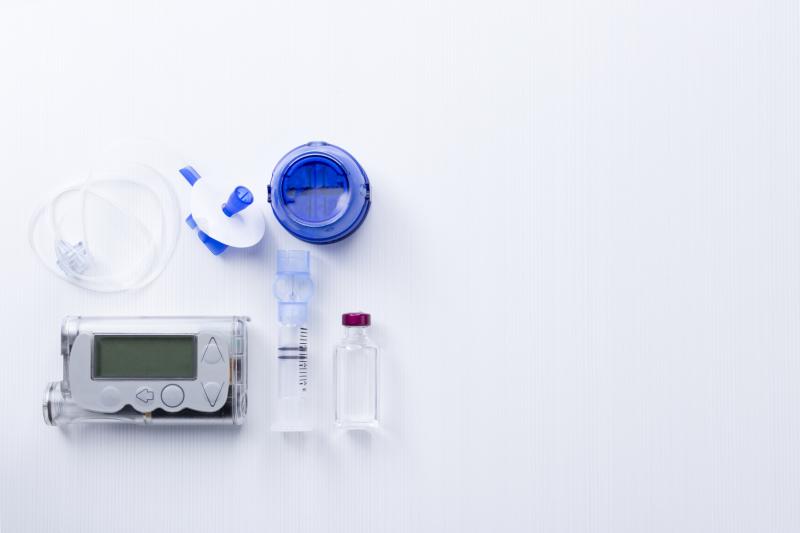 J&J recently said its insulin pump (not shown) is unencrypted, and as such can be vulnerable to hacking.
J&J recently said its insulin pump (not shown) is unencrypted, and as such can be vulnerable to hacking.Switching from a sensor-augmented pump (SAP) system with a predictive low glucose suspend (PLGS) feature to a hybrid closed-loop (HCL) system improves glucose control among type 1 diabetes (T1D) patients, according to a recent study.
“To our knowledge, our study is the first to compare the efficacy of the Minimed 670G [HCL system] with respect to SAP therapy with PLGS,” said researchers.
Of 40 T1D patients using SAP therapy with PLGS for at least 12 months, 20 were consecutively switched to the Minimed 670G HCL device (mean age, 42.1±8.5 years; 11 males); the remaining half continued treatment as is and were set as controls (mean age, 45.9±12.2 years; 11 males). Patients in both groups self-monitored their blood glucose levels with comparable frequency at baseline and at the end of the study period. [Diabetes Technol Ther 2019;doi:10.1089/dia.2019.0302]
Total daily insulin requirement dropped in the HCL group, from 43±7 U at baseline to 39.8±2 U. Those who remained on the SAP system, on the other hand, saw an increase in daily insulin need (44.3±19.8 to 45.3±24.8 U).
A similar pattern of effect was reported for basal insulin requirements (HCL: 23.6±8.9 to 21.7±7 U/day; SAP: 25.2±15.3 to 26±17.1 U/day). Normalizing differences for body weight, between-group discrepancies failed to reach statistical significance.
Moreover, the HCL system resulted in a significant drop in glycated haemoglobin (HbA1c) levels by study end (7.4±1 percent to 7.0±0.6 percent; p<0.05), while no such effect was reported for the SAP device group (7.4±0.9 percent to 7.5±0.9 percent). The same was true for mean sensor glucose (HCL: 166.3±29.4 to 152.1±14.5 mg/dL; p<0.05; SAP: 170.1±28.2 to 170.8±26.2).
The percentage of time spent in euglycaemic range also significantly increased in the HCL group (59±16 percent to 71.4±9.8 percent; p<0.005), but not in the SAP comparators (58.4±16.1 percent to 60.8±16.7 percent).
Conversely, the percentage time spent in the hyperglycaemic ranges of 181–250 and >250 mg/dL decreased significantly in the HCL group, but not in the SAP participants. Neither intervention showed significant effects on the time spent in hypoglycaemia. There were also no episodes of severe hypoglycaemia or ketoacidosis reported.
“Our results showed that the use of an HCL system allows to reduce HbA1c levels, mean glucose concentrations and time spent in hyperglycaemic ranges, and to increase sensor glucose values in target range with respect to the use of SAP with PLGS feature,” said researchers, “which represented the gold-standard in SAP therapy before the advent of HCL systems.”